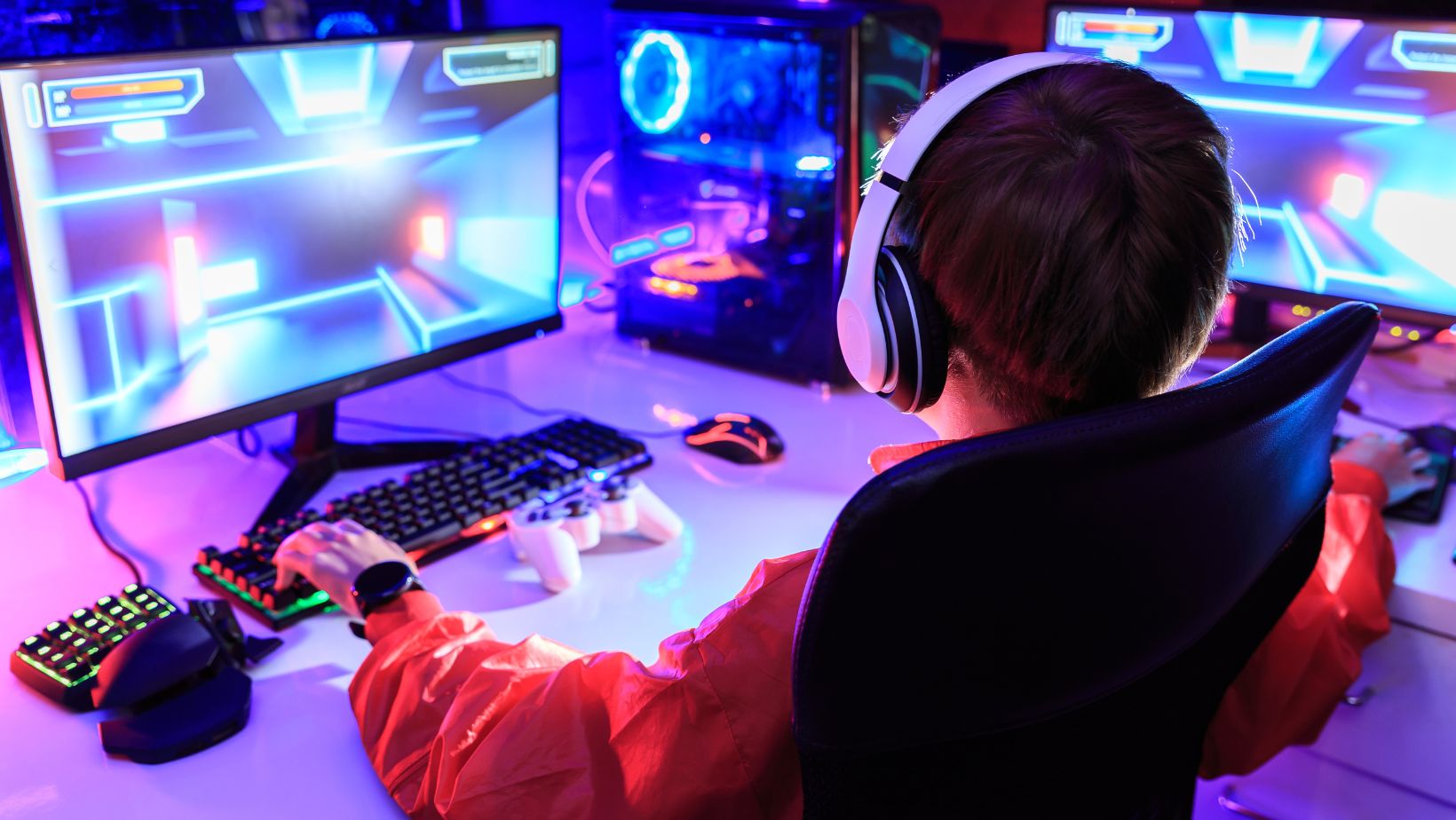Choosing the right gaming monitor is crucial for competitive success in esports. This article breaks down the key features to look for—like refresh rate, response time, input lag, and panel type—to help you find the perfect display for fast-paced titles like Valorant, CS2, and League of Legends. Whether you’re grinding ranked or entering tournaments, make sure your monitor is working for you—not against you.
Modern Gaming Monitors: What to Look For When Choosing for Esports Disciplines
In the world of esports, every millisecond counts. Whether you’re clutching a round in Valorant, peeking a corner in CS2, or micro-managing a battle in StarCraft II, your monitor can either sharpen your edge or dull your performance.
But with so many specs and buzzwords—refresh rate, response time, input lag, G-Sync, IPS vs. TN—how do you choose the right monitor for competitive gaming? Let’s figure it out together with the casino gratis: tragamonedas team.
Why Your Monitor Matters in Esports
Esports isn’t just about skill. It’s about clarity, speed, and consistency.
A good gaming monitor helps you:
- React faster
- See enemies more clearly
- Avoid screen tearing or input delays
- Maintain focus during long practice sessions
So let’s look at the key specs you need to understand when shopping for a serious esports setup.
Refresh Rate: 144Hz Is the Minimum. 240Hz+ Is Ideal.
What it is: The number of times your monitor updates the image per second. A 60Hz monitor refreshes 60 times per second; a 240Hz monitor refreshes 240 times.
Why it matters: Higher refresh rates = smoother motion. In fast-paced games, this can dramatically improve tracking, flick shots, and overall response.

Esports tip:
- 144Hz is the baseline for competitive gaming
- 240Hz is now the standard in pro esports
- 360Hz (or even 500Hz) is available for elite players who want absolute smoothness—but only if your PC can push that many frames
Response Time: 1ms or Bust
- What it is: How quickly a pixel can change from one color to another, usually measured in milliseconds (ms).
- Why it matters: Lower response times reduce motion blur, ghosting, and visual artifacts—especially noticeable when tracking fast movement.
- Esports tip: Look for monitors with 1ms GtG (gray-to-gray) or 1ms MPRT. Avoid anything over 5ms if you’re serious about competition.
Input Lag: The Silent Killer
- What it is: The delay between your mouse/keyboard input and what appears on-screen.
- Why it matters: High input lag creates a disconnect between your actions and what you see—making it harder to land precise shots or react quickly.
- Esports tip: Most modern gaming monitors have low input lag, but to be safe, check reviews from trusted sources that test it directly. Aim for under 10ms input lag.
Panel Type: TN vs. IPS vs. OLED
TN (Twisted Nematic)
- Pros: Fastest response times, lowest input lag
- Cons: Washed-out colors, poor viewing angles
- Good for: Pure competitive players who care only about speed
IPS (In-Plane Switching)
- Pros: Better colors and viewing angles, decent speed
- Cons: Slightly slower than TN, more expensive
- Good for: Players who want both speed and visuals
OLED
- Pros: Perfect contrast, instant response times
- Cons: Expensive, risk of burn-in with static HUDs
- Good for: Hybrid gaming (casual + esports), future-forward setups
Adaptive Sync: G-Sync vs. FreeSync
What it is: Tech that syncs your monitor’s refresh rate with your GPU’s frame rate to eliminate screen tearing.

- G-Sync (NVIDIA) and FreeSync (AMD) both work well
- Most modern GPUs and monitors now support both
- Some esports players disable it to minimize latency—but for casual or training sessions, it can improve visual quality
Screen Size & Resolution: Bigger Isn’t Always Better
- Size: 24 to 27 inches is the sweet spot. Larger monitors require more eye/head movement, which can slow you down in fast-paced games.
- Resolution: 1080p (Full HD) is still the standard in esports—easier to hit high FPS. 1440p is growing, but make sure your GPU can keep up.
Bonus Tips for Esports Players
- Stick to flat screens. Curved monitors may distort perception in FPS titles.
- Check the stand. A flexible stand with height, tilt, and swivel adjustment helps with ergonomics.
- Color accuracy doesn’t matter as much—unless you’re also a content creator.
Final Thoughts: Speed Over Style
In esports, raw performance beats visual flair. The best gaming monitor isn’t the one with RGB lighting or 4K resolution—it’s the one that helps you see faster, react faster, and win more games.
If you’re serious about competing, invest in:
- 240Hz (or higher) refresh rate
- 1ms response time
- Low input lag
- Reliable panel type (IPS or TN)
- Adaptive sync support
The right monitor won’t make you a pro overnight—but it will make sure your hardware isn’t holding you back.


